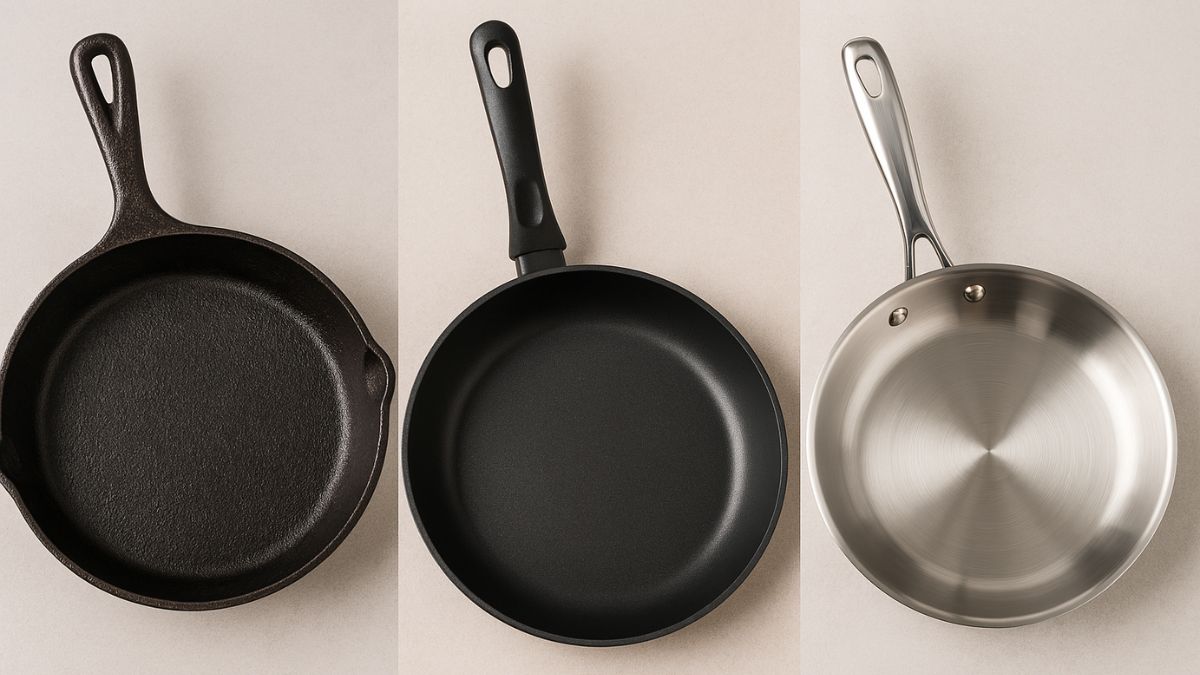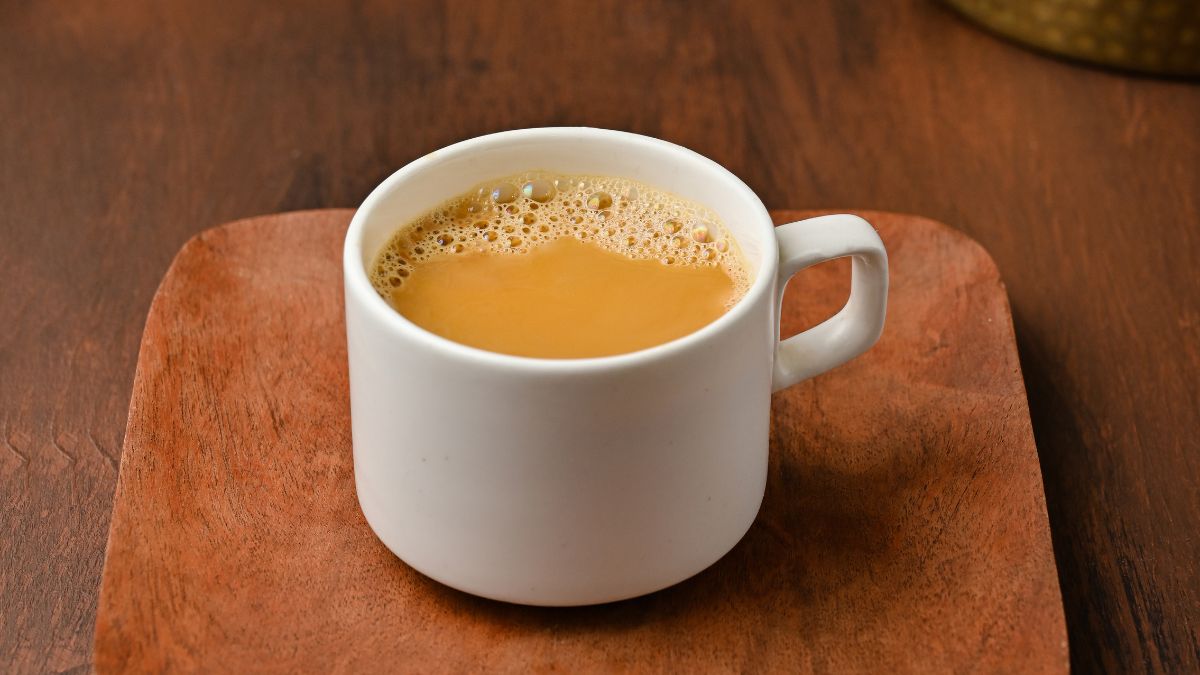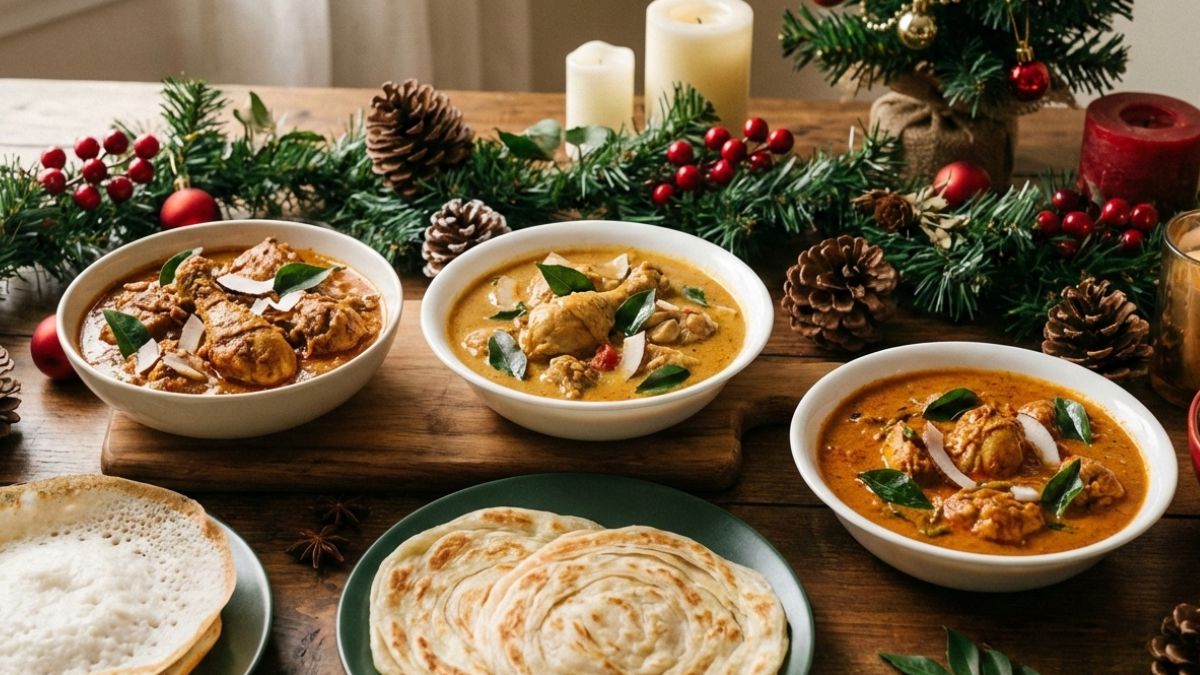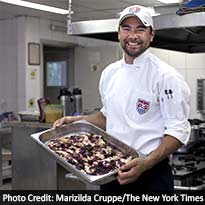It is difficult to cook for any crowd, but when that crowd is a couple of dozen lean and lithe professional soccer players who are seeking proper nutrition and recovery-enhancing properties, along with excellent flavor, for three meals a day over several weeks, the challenge becomes more complex.Bryson Billapando, the chef for the U.S. national team, knows this. Handpicked by coach Jurgen Klinsmann - who did not require a tasting before hiring Billapando but did require an interview - he is charged with fueling the American team during every day of this World Cup. With 23 players, plus assorted staff members, eating continually, Billapando is well aware that universal acclaim for any dish is difficult to come by. That is why he is particularly pleased that for breakfast, he seems to have discovered the athletes' equivalent of pancakes for the table.
Tim Howard's goalkeeping prowess or Clint Dempsey's scoring acumen may ultimately prove more important to how far the Americans go in the World Cup than Bryson's breakfast chicken enchiladas, but that should not be seen as understating the dish's importance. According to midfielder Mix Diskerud, the flavor of the enchiladas is "intense." Alejandro Bedoya described them as "perfect." Kyle Beckerman raved that they were "a great start to the day."Billapando appreciates the compliments but sheepishly admits that he pretty much "made the recipe up off the top of my head."In a recent interview, he started running down the recipe in a sort of chef's stream of consciousness: Enchilada sauce from scratch. Slow-roasted tomatoes, bell peppers, onions and garlic. Caramelized flavor. Boil the chicken and shred it up. Add enchilada sauce to keep it moist. Put it in corn tortillas. Get those nice scrambled eggs inside. A little cheese on top.He laughed. "If everyone likes it," he said, "that's the best feeling you can get as a chef."For each meal, Billapando collaborates with the team's sports performance dietitian, Danielle LaFata, to come up with a plan. Billapando did an externship at Exos, the sports performance institute formerly known as Athletes Performance, so he is familiar with the basic culinary guidelines when it comes to cooking for people who consider their bodies to be temples."Danielle knows I'm not going to put butter in things; she knows I'm not going to put cream into things," he said. Instead, they try to put together flavorful meals that also help with recovery - a critical attribute in a tournament where players compete in draining games every few days.Garlic, Billapando said, is a frequent ingredient because it has anti-inflammatory properties. Billapando also likes to integrate ginger, he said, because it "awakens the body." "We treat these guys like they're high-end cars," he said. "Like they're top-of-the-line, million-dollar cars. That's what they are - they're top athletes. In no way do I want anything, even the littlest thing, to compromise their quality."To that end, Billapando and LaFata take precautions to ensure quality control. The U.S. team has its base at the practice center of São Paulo FC, and Billapando and LaFata took full advantage of a January training camp to check out the facilities. While there, Billapando toyed with the oven in the kitchen and learned the vagaries of the various burners; he did the same at the team's hotel to properly calibrate the timing for his recipes.Billapando and LaFata also traveled to the cities the Americans played in during the group phase - Natal, Manaus and Recife - to examine the hotels where the team stayed and make requests of the kitchen staffs.In each place, Billapando requests that part of the kitchen be set aside for use only by the national team to ensure there is no accidental mixing of ingredients. He also does not like to risk any potential contamination of fresh fruits or vegetables, so he and LaFata wash everything themselves.In the buildup to the tournament, a Brazilian consumer advocacy organization reported that it had found food past its expiration date in the hotels used by England and Italy. "We check the water filtration systems in each place; we check the refrigeration temperatures," Billapando said. "We don't want to take any chances."The United States is not the only team here to use its own chef or nutritionist. Italy has a similar setup, and many teams brought particular foods or ingredients. Mexico, for example, brought along the ingredients for pozole.The increasing attention paid to nutrition has created more awareness of its benefits for athletes, and Klinsmann, who is progressive when it comes to training and preparation for his players, was determined to integrate a chef into the team's World Cup preparations.Billapando, who studied culinary arts at Johnson & Wales, recalled how nervous he was when he interviewed with Klinsmann late last year in Southern California and how excited he was when he was told a few days later that he got the job.He joined the Americans at their training camp in January and has been with them ever since. The menus in Brazil have been heavy on rice and beans, he said, but he and LaFata have been able to produce a good variety of meals for the U.S. team, which is preparing for a Round of 16 match against Belgium on Tuesday.The only area that may be lacking, Billapando said, is dessert. With athletes, there no good time to try a Brazilian treat like the chocolate goodness that is a brigadeiro."It's a Catch-22," Billapando said. "We've got to keep the spirits up and keep everyone happy, but it's not always possible. The only time we can do desserts is with dinner, but we don't want to send the guys to bed with sugar in their systems."He laughed. "Maybe that's why they're so hungry at breakfast," he said.U.S. Men's National Team Breakfast Chicken Enchiladas
Time: 1 hour 45 minutes
Yield: About 12 servingsFor the enchilada sauce:
- 3 red bell peppers
- 1 yellow onion, quartered
- 5 garlic cloves
- 6 whole tomatoes
- 3 tablespoons ground cumin
- 3 tablespoons dried oregano
- Salt
- Ground black pepperFor the enchiladas:
- 4 chicken breasts
- 30 4- to 6-inch corn tortillas
- 2 cups pepper Jack cheese, shredded
- 3 cups sharp Cheddar cheese
- 8 eggs
- 1 tablespoon olive oil1: Make the sauce: Heat oven to 450 degrees. On a sheet pan, place whole bell peppers, onion, garlic cloves and whole tomatoes. Place pan on the upper middle rack of the oven. Check after 15 minutes and rotate pan if vegetables are not browning evenly. The peppers and tomatoes will begin to scorch; that is fine.
2: Once the vegetables are slightly charred, remove pan from oven and place the tomatoes and peppers into a bowl, cover with plastic wrap and allow to cool. Place garlic cloves and onions in a one-gallon saucepan.
3: When the peppers and tomatoes are cool enough to handle but still warm, remove and discard the skin. Remove the stem, seeds and any white inner membrane from the peppers. Add tomatoes and peppers, along with any liquid from the bowl, to the pot with the onions and garlic.
4: With an immersion blender or in a blender, purée the vegetables until smooth. Bring to a simmer. Add cumin and oregano and stir frequently. Thin with water if desired. Salt and pepper to taste.
5: Make the casserole: Place chicken breasts into a large pot and cover with cold water by at least two inches. Bring to a boil and reduce to a simmer. Cook until the chicken is just cooked through, about 30 minutes.
6: Cool the chicken until it can be handled, remove the bones and skin, and discard. Shred the meat and set aside. Add one-quarter of the sauce to the chicken.
7: Heat the oven to 350. In a skillet, scramble the eggs and set aside. Lightly oil a 13-by-9-inch glass or stainless steel pan and place a single layer of tortillas on the bottom, slightly overlapping and going up the sides. Add one-third of the chicken, one-third of the scrambled eggs, one-third of the cheeses and one-third of the remaining sauce. Gently press to remove air pockets and make the layer even.
8: Repeat twice more or until the pan is filled and ends with a layer of tortillas, sauce and cheese.
9: Bake until the middle is 165 degrees.© 2014 New York Times News Service
Tim Howard's goalkeeping prowess or Clint Dempsey's scoring acumen may ultimately prove more important to how far the Americans go in the World Cup than Bryson's breakfast chicken enchiladas, but that should not be seen as understating the dish's importance. According to midfielder Mix Diskerud, the flavor of the enchiladas is "intense." Alejandro Bedoya described them as "perfect." Kyle Beckerman raved that they were "a great start to the day."Billapando appreciates the compliments but sheepishly admits that he pretty much "made the recipe up off the top of my head."In a recent interview, he started running down the recipe in a sort of chef's stream of consciousness: Enchilada sauce from scratch. Slow-roasted tomatoes, bell peppers, onions and garlic. Caramelized flavor. Boil the chicken and shred it up. Add enchilada sauce to keep it moist. Put it in corn tortillas. Get those nice scrambled eggs inside. A little cheese on top.He laughed. "If everyone likes it," he said, "that's the best feeling you can get as a chef."For each meal, Billapando collaborates with the team's sports performance dietitian, Danielle LaFata, to come up with a plan. Billapando did an externship at Exos, the sports performance institute formerly known as Athletes Performance, so he is familiar with the basic culinary guidelines when it comes to cooking for people who consider their bodies to be temples."Danielle knows I'm not going to put butter in things; she knows I'm not going to put cream into things," he said. Instead, they try to put together flavorful meals that also help with recovery - a critical attribute in a tournament where players compete in draining games every few days.Garlic, Billapando said, is a frequent ingredient because it has anti-inflammatory properties. Billapando also likes to integrate ginger, he said, because it "awakens the body." "We treat these guys like they're high-end cars," he said. "Like they're top-of-the-line, million-dollar cars. That's what they are - they're top athletes. In no way do I want anything, even the littlest thing, to compromise their quality."To that end, Billapando and LaFata take precautions to ensure quality control. The U.S. team has its base at the practice center of São Paulo FC, and Billapando and LaFata took full advantage of a January training camp to check out the facilities. While there, Billapando toyed with the oven in the kitchen and learned the vagaries of the various burners; he did the same at the team's hotel to properly calibrate the timing for his recipes.Billapando and LaFata also traveled to the cities the Americans played in during the group phase - Natal, Manaus and Recife - to examine the hotels where the team stayed and make requests of the kitchen staffs.In each place, Billapando requests that part of the kitchen be set aside for use only by the national team to ensure there is no accidental mixing of ingredients. He also does not like to risk any potential contamination of fresh fruits or vegetables, so he and LaFata wash everything themselves.In the buildup to the tournament, a Brazilian consumer advocacy organization reported that it had found food past its expiration date in the hotels used by England and Italy. "We check the water filtration systems in each place; we check the refrigeration temperatures," Billapando said. "We don't want to take any chances."The United States is not the only team here to use its own chef or nutritionist. Italy has a similar setup, and many teams brought particular foods or ingredients. Mexico, for example, brought along the ingredients for pozole.The increasing attention paid to nutrition has created more awareness of its benefits for athletes, and Klinsmann, who is progressive when it comes to training and preparation for his players, was determined to integrate a chef into the team's World Cup preparations.Billapando, who studied culinary arts at Johnson & Wales, recalled how nervous he was when he interviewed with Klinsmann late last year in Southern California and how excited he was when he was told a few days later that he got the job.He joined the Americans at their training camp in January and has been with them ever since. The menus in Brazil have been heavy on rice and beans, he said, but he and LaFata have been able to produce a good variety of meals for the U.S. team, which is preparing for a Round of 16 match against Belgium on Tuesday.The only area that may be lacking, Billapando said, is dessert. With athletes, there no good time to try a Brazilian treat like the chocolate goodness that is a brigadeiro."It's a Catch-22," Billapando said. "We've got to keep the spirits up and keep everyone happy, but it's not always possible. The only time we can do desserts is with dinner, but we don't want to send the guys to bed with sugar in their systems."He laughed. "Maybe that's why they're so hungry at breakfast," he said.U.S. Men's National Team Breakfast Chicken Enchiladas
Time: 1 hour 45 minutes
Yield: About 12 servingsFor the enchilada sauce:
- 3 red bell peppers
- 1 yellow onion, quartered
- 5 garlic cloves
- 6 whole tomatoes
- 3 tablespoons ground cumin
- 3 tablespoons dried oregano
- Salt
- Ground black pepperFor the enchiladas:
- 4 chicken breasts
- 30 4- to 6-inch corn tortillas
- 2 cups pepper Jack cheese, shredded
- 3 cups sharp Cheddar cheese
- 8 eggs
- 1 tablespoon olive oil1: Make the sauce: Heat oven to 450 degrees. On a sheet pan, place whole bell peppers, onion, garlic cloves and whole tomatoes. Place pan on the upper middle rack of the oven. Check after 15 minutes and rotate pan if vegetables are not browning evenly. The peppers and tomatoes will begin to scorch; that is fine.
2: Once the vegetables are slightly charred, remove pan from oven and place the tomatoes and peppers into a bowl, cover with plastic wrap and allow to cool. Place garlic cloves and onions in a one-gallon saucepan.
3: When the peppers and tomatoes are cool enough to handle but still warm, remove and discard the skin. Remove the stem, seeds and any white inner membrane from the peppers. Add tomatoes and peppers, along with any liquid from the bowl, to the pot with the onions and garlic.
4: With an immersion blender or in a blender, purée the vegetables until smooth. Bring to a simmer. Add cumin and oregano and stir frequently. Thin with water if desired. Salt and pepper to taste.
5: Make the casserole: Place chicken breasts into a large pot and cover with cold water by at least two inches. Bring to a boil and reduce to a simmer. Cook until the chicken is just cooked through, about 30 minutes.
6: Cool the chicken until it can be handled, remove the bones and skin, and discard. Shred the meat and set aside. Add one-quarter of the sauce to the chicken.
7: Heat the oven to 350. In a skillet, scramble the eggs and set aside. Lightly oil a 13-by-9-inch glass or stainless steel pan and place a single layer of tortillas on the bottom, slightly overlapping and going up the sides. Add one-third of the chicken, one-third of the scrambled eggs, one-third of the cheeses and one-third of the remaining sauce. Gently press to remove air pockets and make the layer even.
8: Repeat twice more or until the pan is filled and ends with a layer of tortillas, sauce and cheese.
9: Bake until the middle is 165 degrees.© 2014 New York Times News Service
Advertisement













